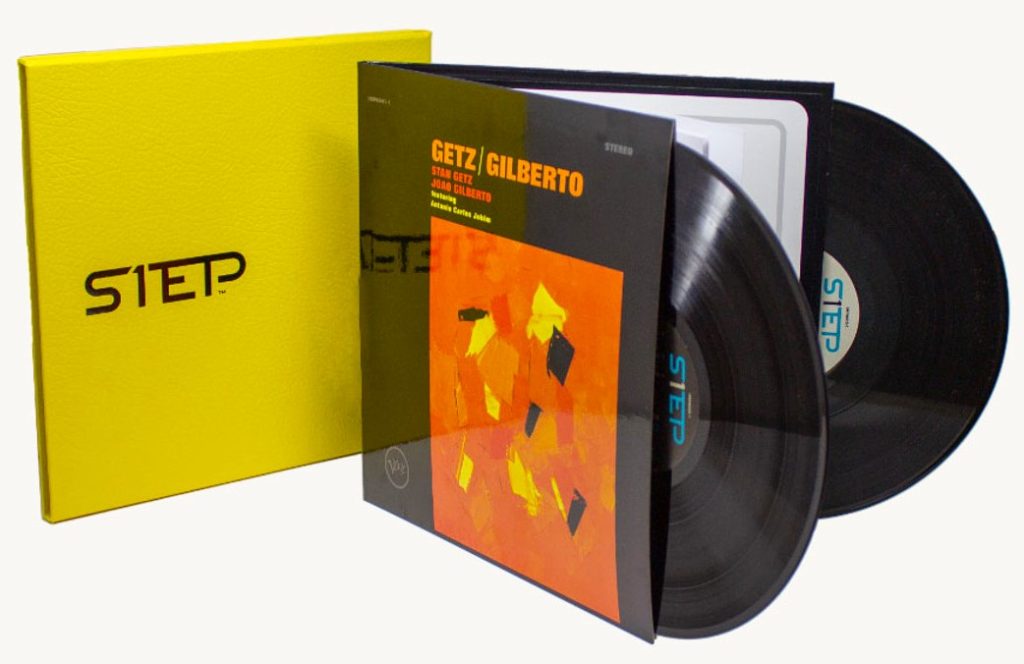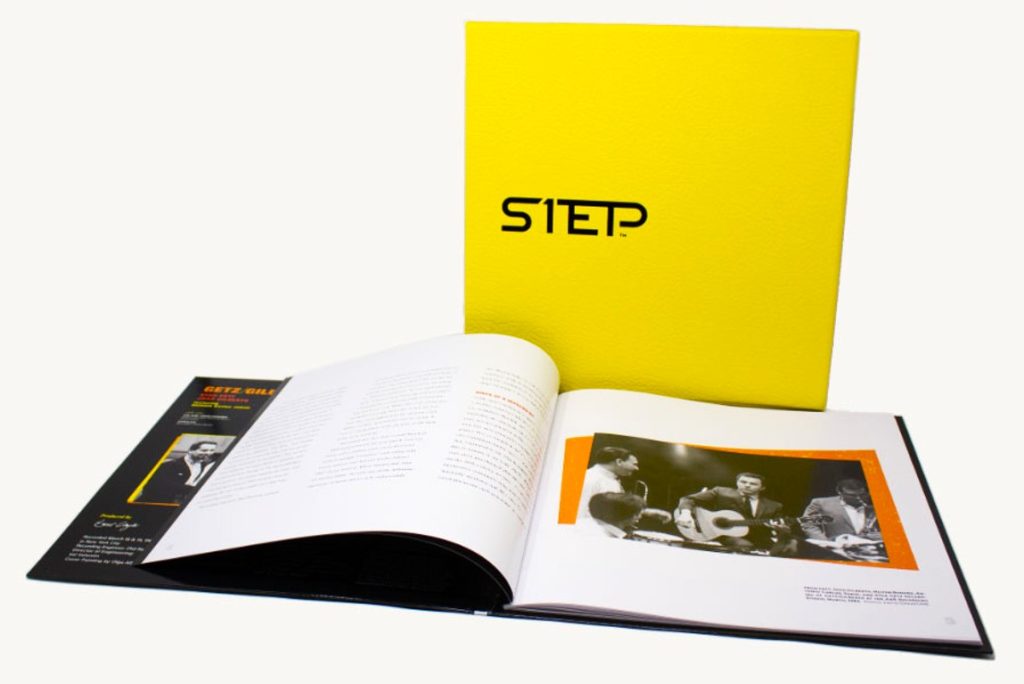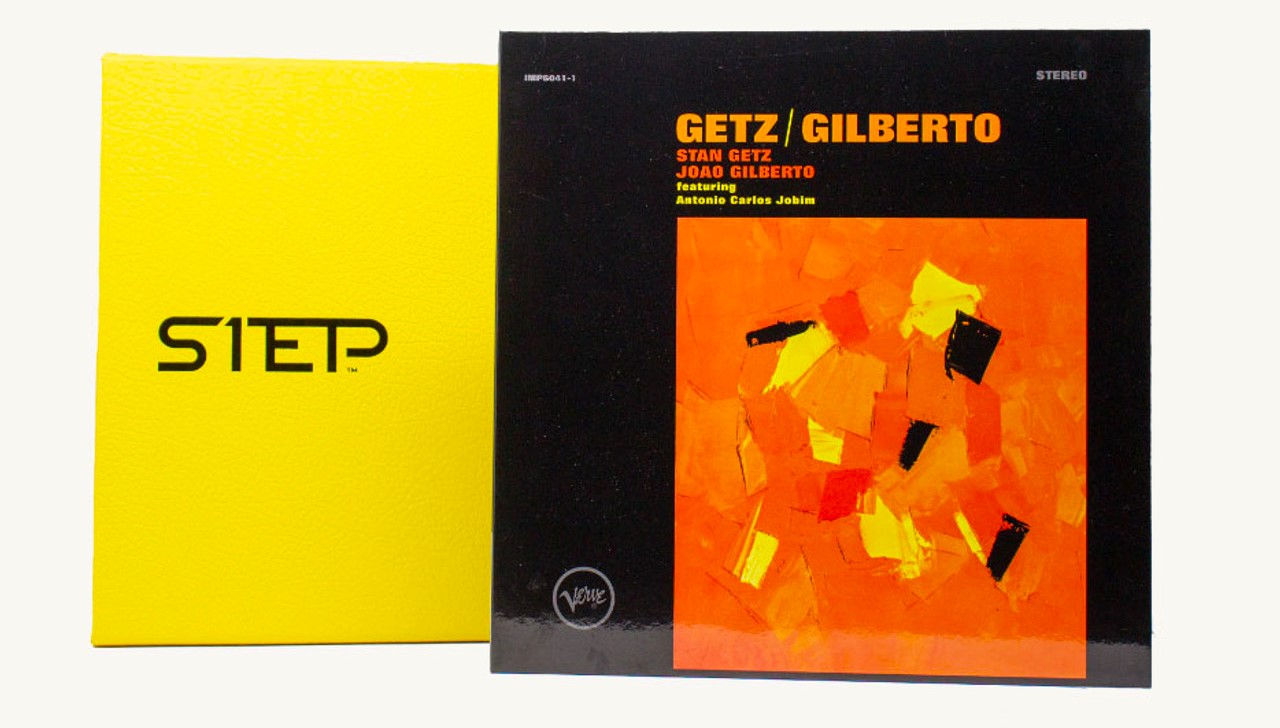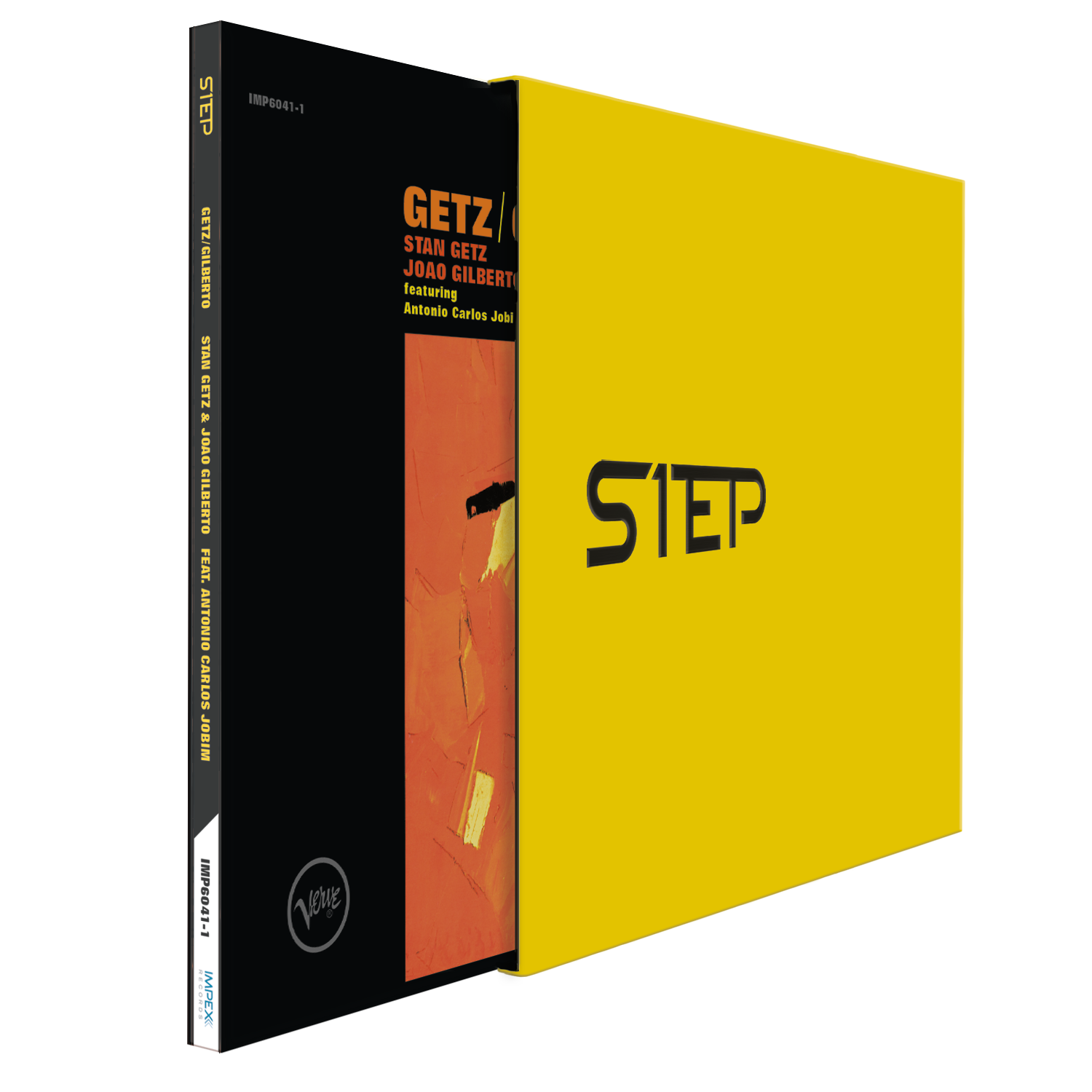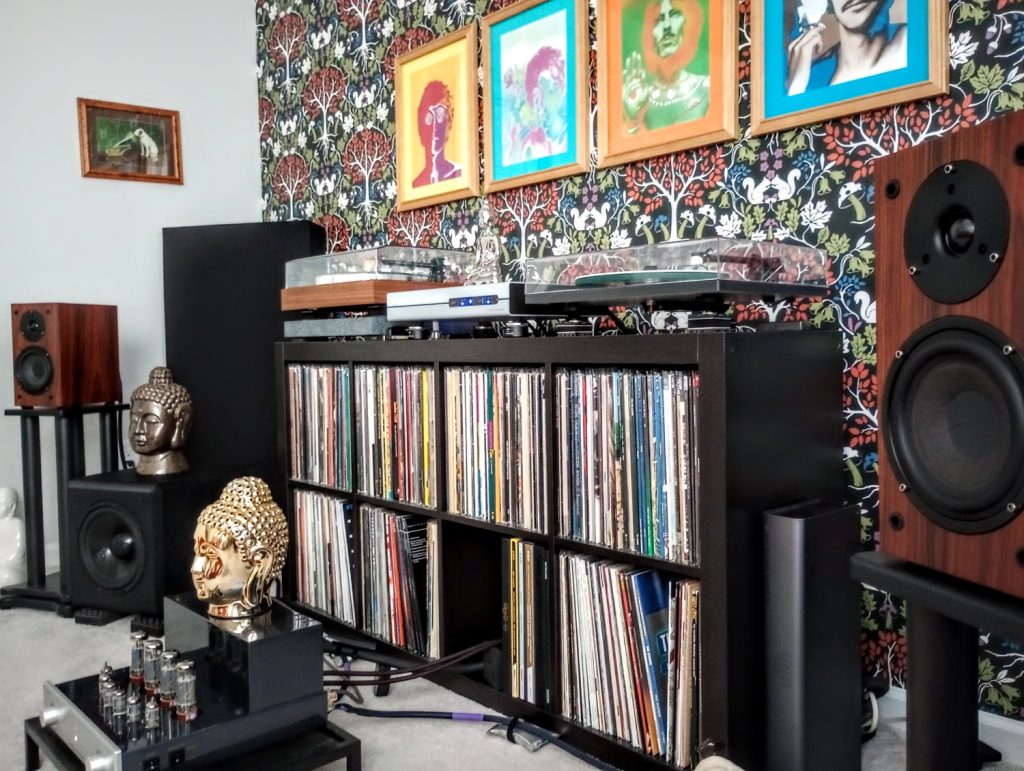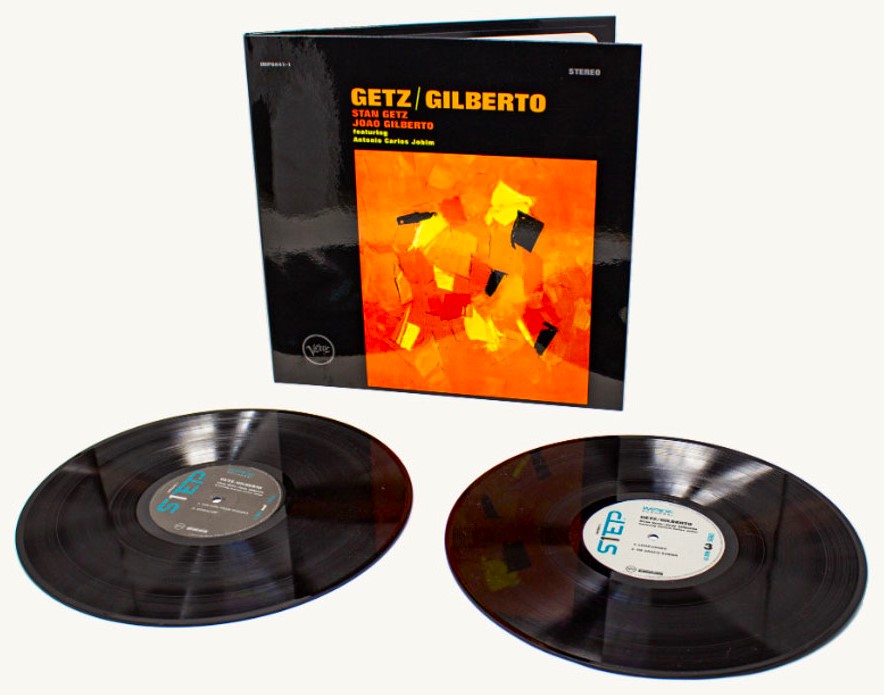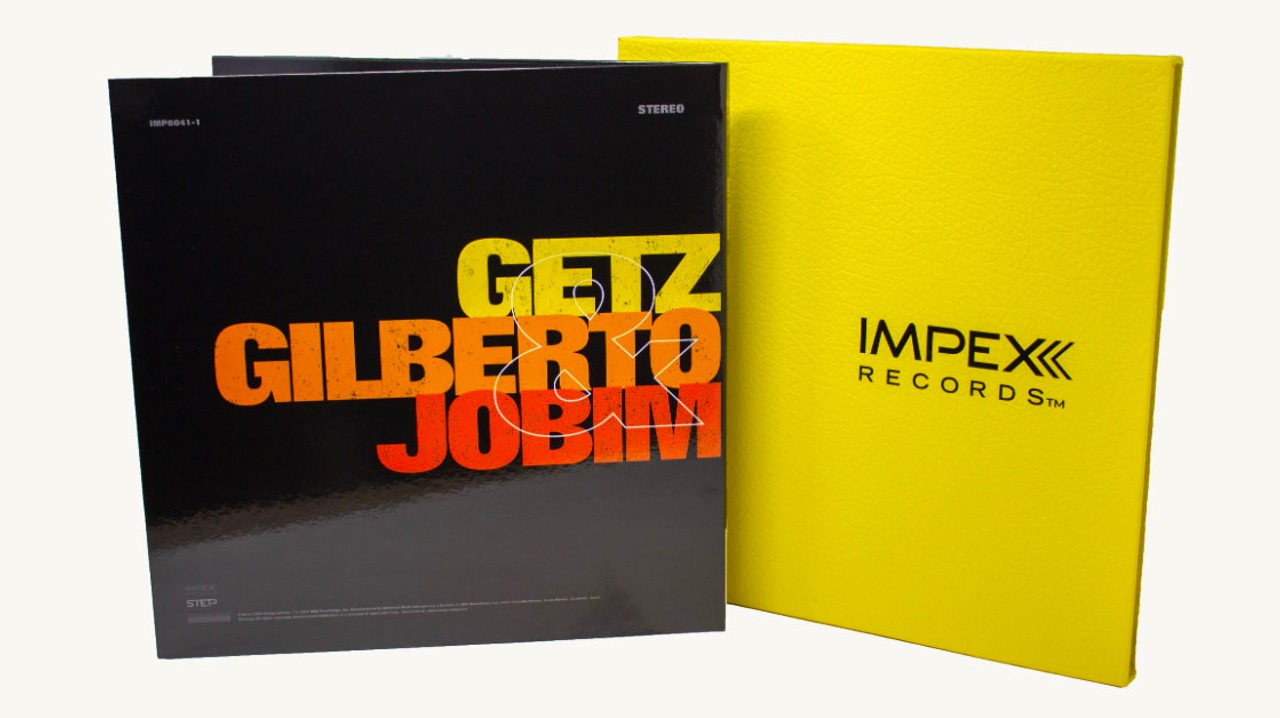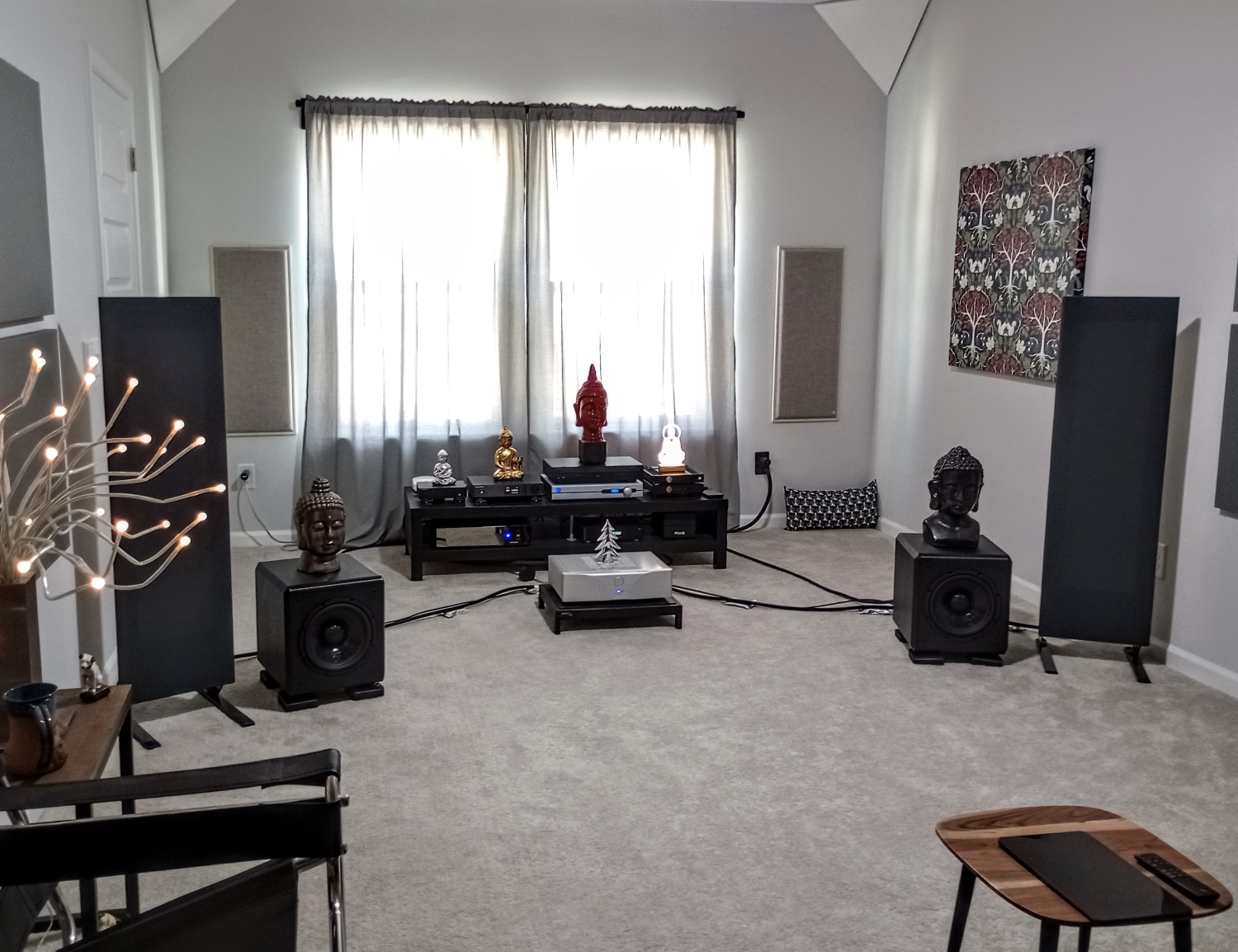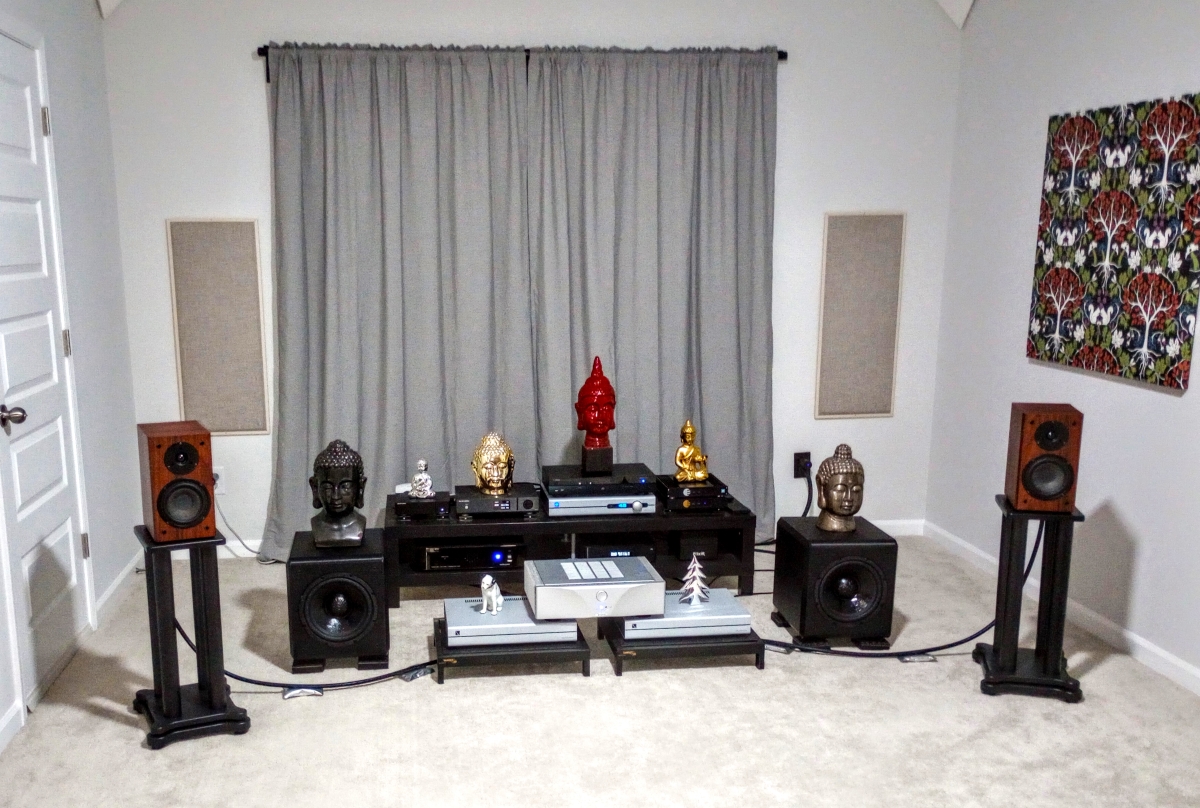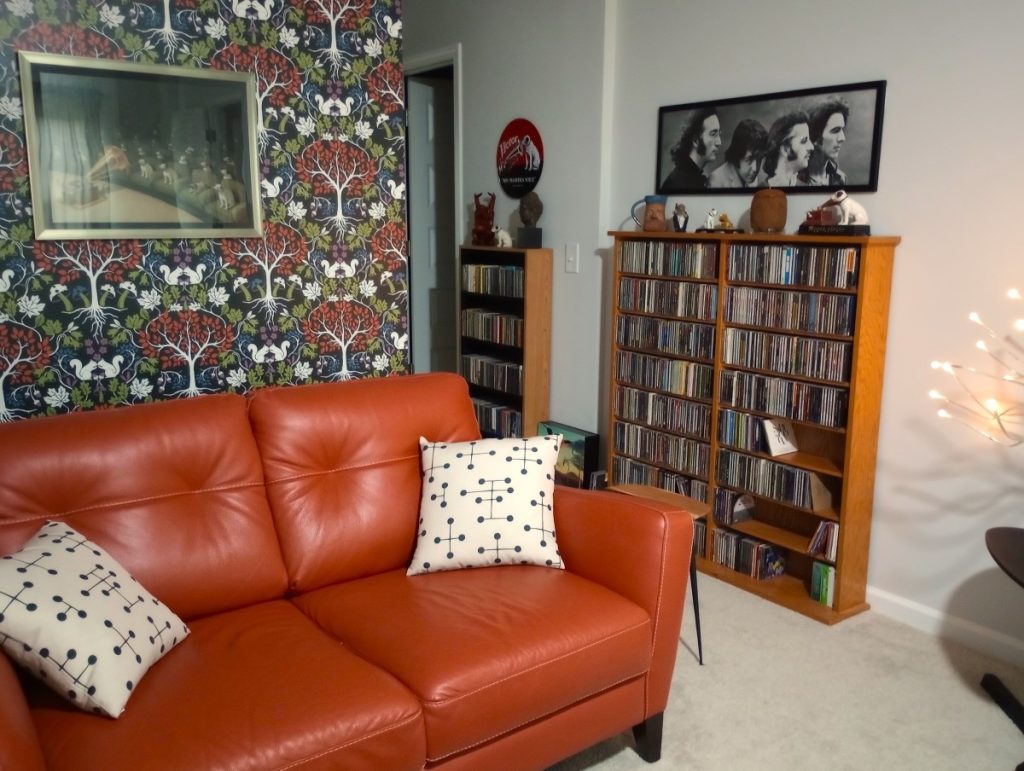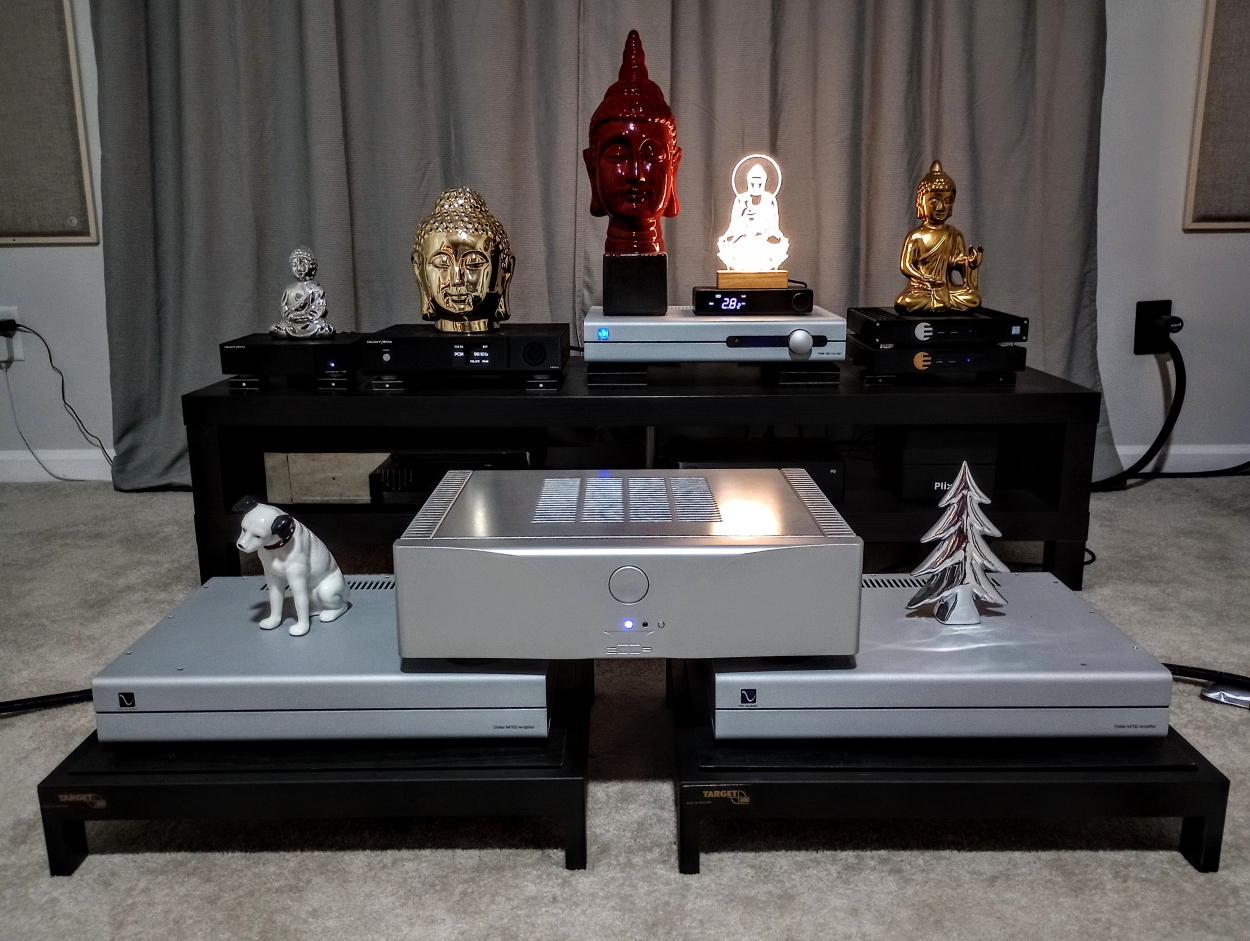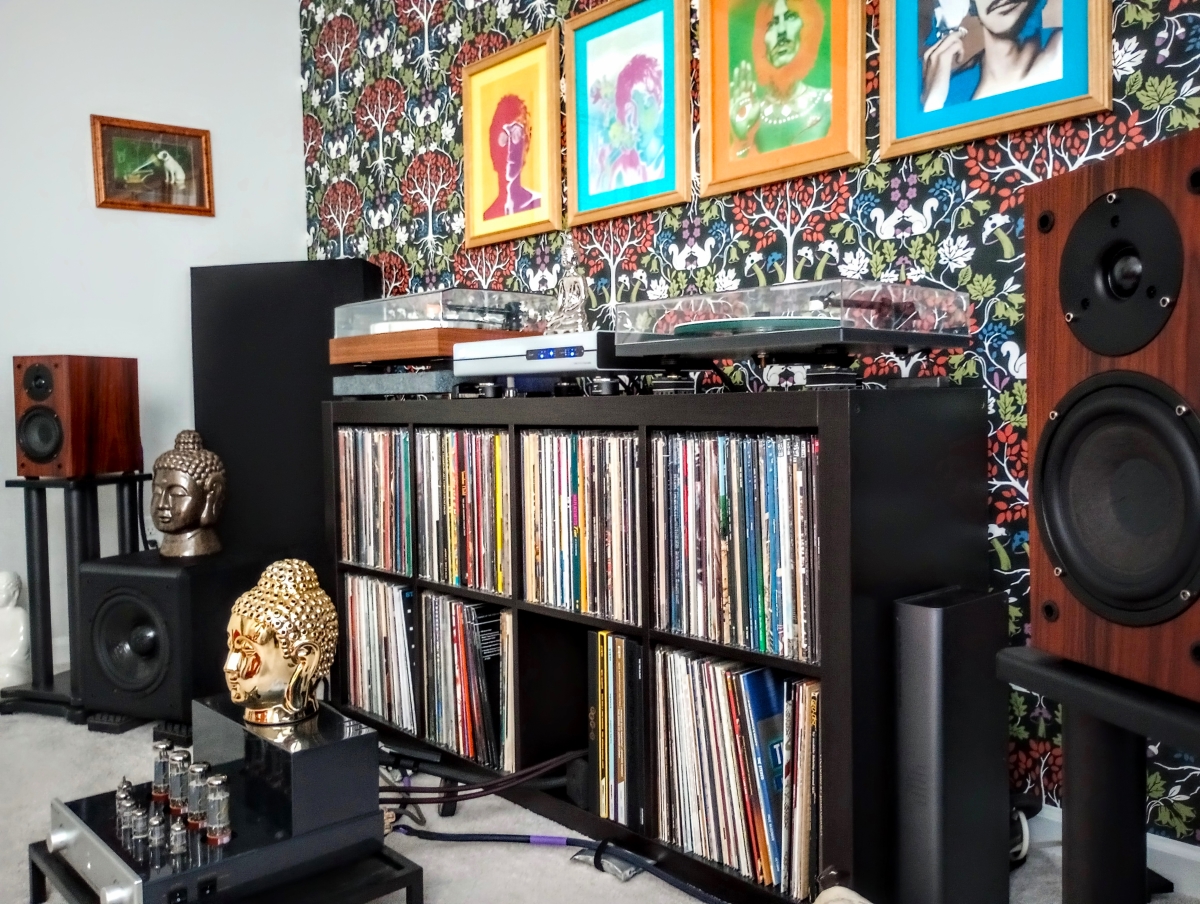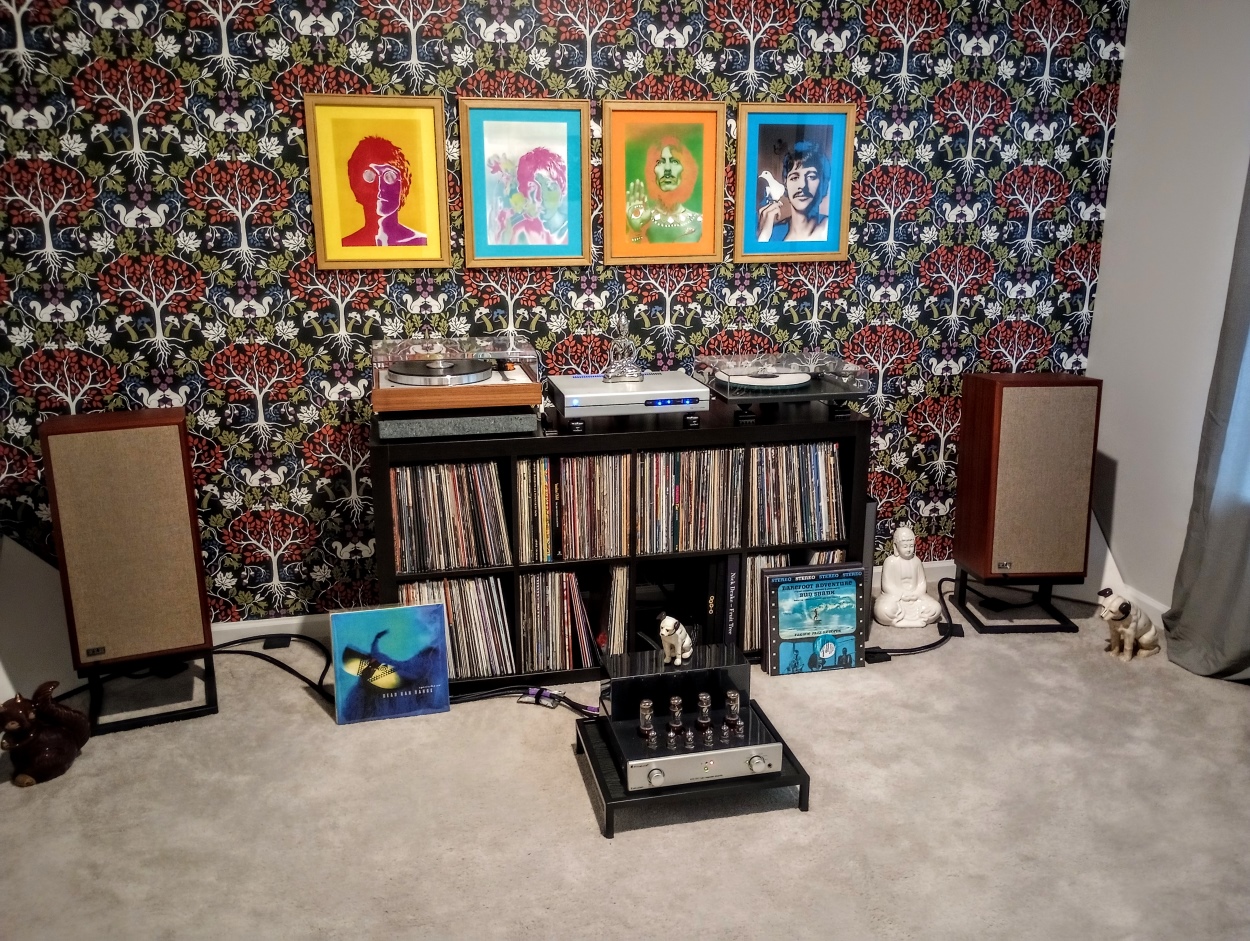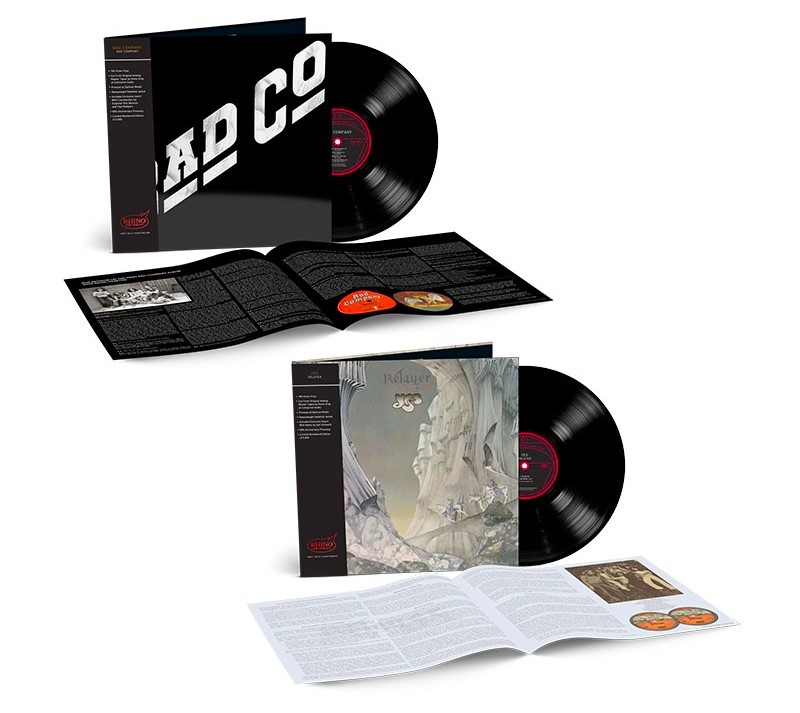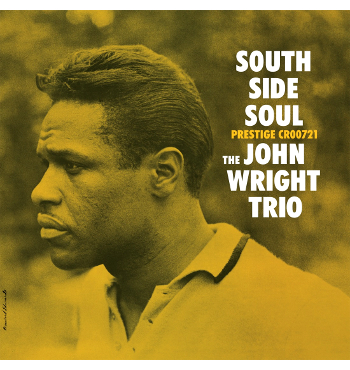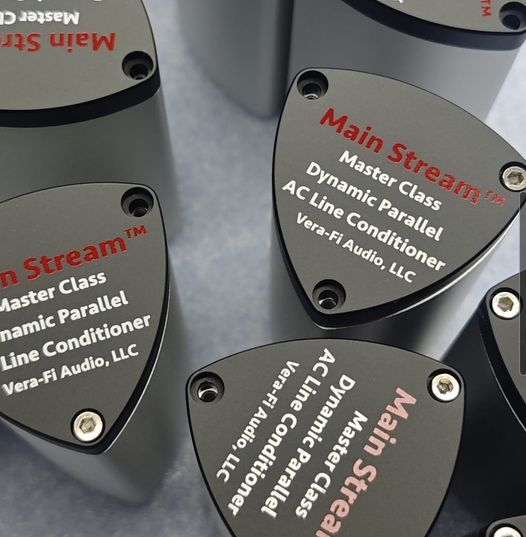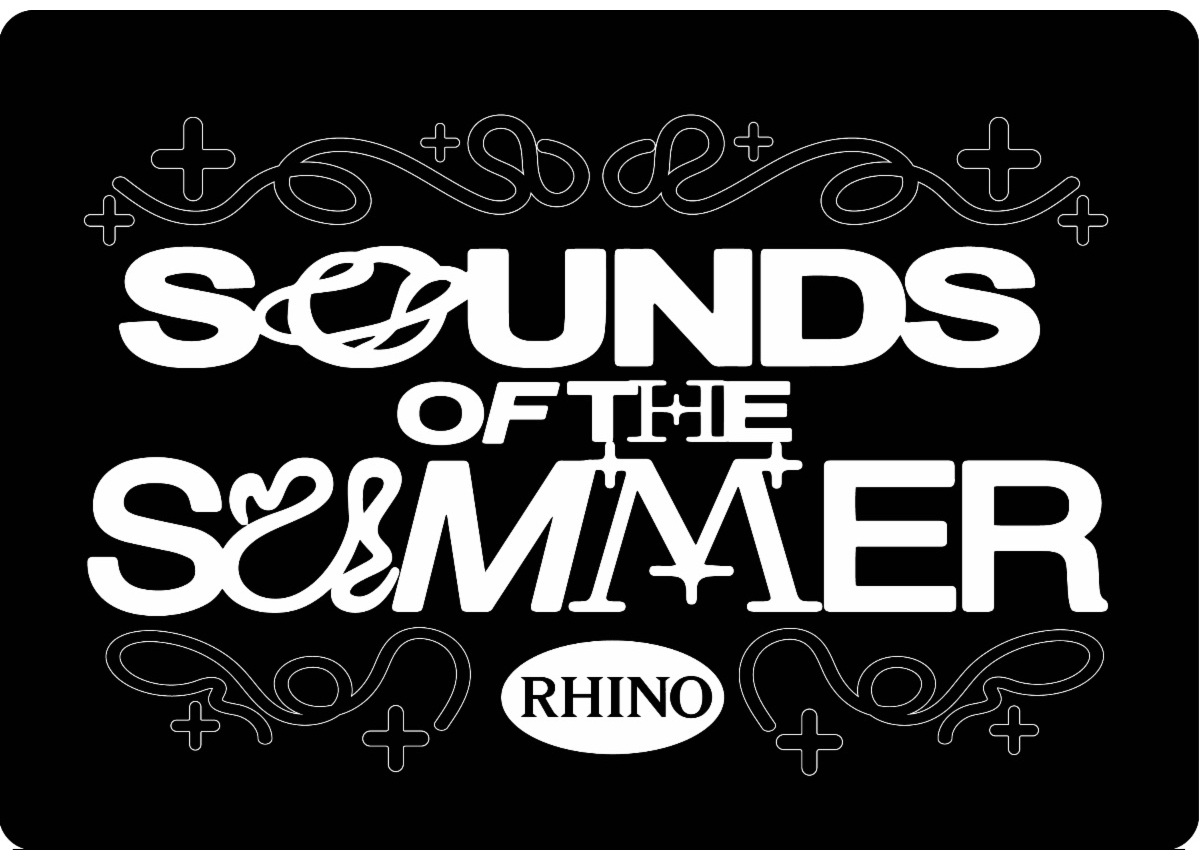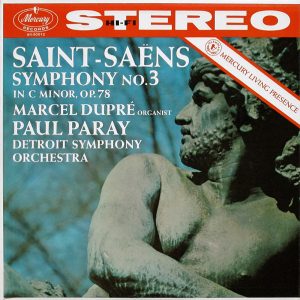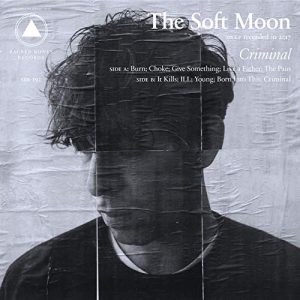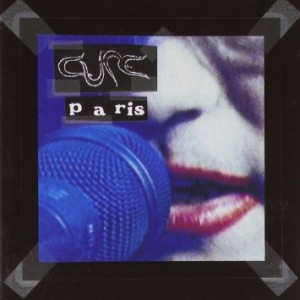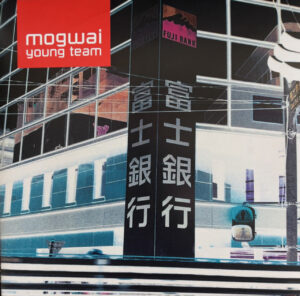Impex Records has just released another of their incredible 1STEP 45 rpm LP box sets, this time featuring the classic Bossa Nova album Getz/Gilberto. Impex's 1STEP process is fairly labor-intensive, in that it requires cutting a new set of lacquers for every pressing run of 500 LPs. This nearly insane level of precision guarantees that each LP set will be a faithful reproduction of the original throughout the pressing runs, which are limited to 7500 numbered copies for this edition. Getz/Gilberto has been reissued hundred of times worldwide, with at least forty issues in the US alone, but this new Impex 1STEP version is noteworthy because it featured input throughout the processes from Stan Getz's wife Monica and his son Nick. Both of whom were able to offer their very unique insights into Stan Getz, the man, as well as Getz/Gilberto—and not only the album, but also the musical partnership between two masters of modern music.
Only the original analog master tapes were used for the Impex 1STEP release of Getz/Gilberto. Impex refers to this process as AAAA, where all steps are entirely in the analog domain; starting with the analog recording (1A), which is mixed using all-analog equipment (2A), is then mastered using all-analog equipment (3A), and then has lacquers that are cut directly from the resulting analog master (4A). Bernie Grundman expertly mastered the LPs and cut each set of lacquers for the very demanding 1STEP process. The LPs were then pressed at RTI using Neotech's VR900 Supreme vinyl formulation, under the direction of Rick Hashimoto.
Getz/Gilberto's 1STEP packaging was produced by Stoughton Printing, and features a heavy gatefold album jacket they refer to as their Super-Luxe "Monster Pak." It features Stoughton's reverse tip-on process that accurately and faithfully reproduces a near-perfect facsimile of the original outer jacket. The jacket's two sleeves hold the pair of 180 gram LPs; each LP is inserted into a scratch-free poly inner sleeve to further protect it from dust accumulation and static buildup. Perfect bound into the center of the jacket is a 36-page booklet that includes a treatise from music historian Charles L. "Chuck" Granata; it chronicles not only all aspects of the recording sessions and the events and personalities involved, but also waxes poetically about the album's importance in jazz history. There's also a personal recollection from Stan Getz's wife Monica, and her memories help connect the dots between the complicated background stories during this meeting of the giants of jazz and bossa nova. A special note from the memoirs of singer Astrud Gilberto gives her unique perspective on the recording sessions and dispels some of the myths surrounding her participation in them. The heavily-varnished insert features a wealth of photos from the studio sessions and beyond, along with all pertinent technical specs for the reissue.
Impex's Robert Sliger provided the superb art direction and design for this impressive package, and it's another textbook clinic in both form and function. Many of the rare photos were provided from Universal Music's archives or came from Monica Getz's personal collection. Impex's Abey Fonn handled artist relations and was the producer of this reissue, Robert Bantz served as the executive producer, and Bob Donnelly was the associate producer. Impex Records again proves here that each 1STEP release is the industry standard for classic reissues; you can order a copy of Getz/Gilberto from their partner Elusive Disc HERE.
My Personal Take on Bossa Nova ala Getz/Gilberto
I've developed quite an affinity for classic jazz—and more recently, Bossa Nova—over a period of three decades or so. Although I didn't really come to it naturally; as a much younger man, I was particularly taken with jazz fusion from a diverse group of artists that included the likes of John McLaughlin, Jean-Luc Ponty, Return to Forever, and Weather Report. A 1990 job change placed me in an environment where I listened to jazz radio daily for almost seven years, mostly on WCLK, the all-jazz college radio station of Clark Atlanta University. That experience profoundly affected me, to the point of listening to mostly jazz on WCLK even when in my car or at home. The station's constantly alternating programs of bebop and (then) more current jazz releases introduced me to a catalog of classic performances from a myriad of artists, and also marked the first time I'd ever heard the music of Stan Getz. Which, of course, included tunes from his 1964 classic Getz/Gilberto, most frequently featuring the tunes "The Girl from Ipanema," "Corcovado (Quiet Nights of Quiet Stars)," and "Desafinado." I soon acquired a CD copy of Getz/Gilberto, and over the years have replaced it many times with remastered and upgraded versions, as well as an early SACD version. I was beginning to find bossa nova and samba music rather intoxicating, to say the least!
In 1998, I happened to see the quirky, offbeat movie Next Stop Wonderland; its soundtrack spotlighted new versions and reinterpretations of classic samba and bossa nova tunes, with many of the songs featuring an artist unfamiliar to me, Bebel Gilberto. I found the music to be entertainingly enjoyable, but at that point, my brain didn't extrapolate the connection between Bebel Gilberto and João Gilberto. I didn't pick up any of her CDs until around 2010, when I was visiting Chicago and stumbled into the eclectic White Elephant thrift store that had mountains of ridiculously low-priced CDs. I was able to find her albums (all on the Ziriguiboom label) Tanto Tempo (2000), Tanto Tempo Remixes (2001), Bebel Gilberto (2004), and Momento (2007). Those albums were a mixture of straight-ahead bossa nova and samba selections, and often included spirited performances of dance and electronica-themed remixes of classic bossa and samba tunes. Through reading the liner notes for these albums, I made the connection that João Gilberto was Bebel's father (duh!), and suddenly everything clicked for me. Hearing Bebel Gilberto's bold and adventurous take on this music that also honored the legacy of her very famous father really grabbed me! And the recordings on the CDs were superb, and very nearly audiophile quality. Needless to say, I soon did a deep dive into bossa nova, samba, and especially the music of Stan Getz with João Gilberto.
Stan Getz with Joao Gilberto, Getz/Gilberto. Impex Records 1STEP 45 rpm LPs, $129.99 MSRP
As the late 1950s progressed into the early 1960s, the entire world was beginning to become aware of the captivating rhythms of Brazilian-borne Bossa Nova music and its principal progenitors, Antônio Carlos Jobim (known to his friends as "Tom") and João Gilberto. Tenor saxophonist Stan Getz had done an album of bossa nova music with guitarist Charlie Byrd, 1962's Jazz Samba, which was produced by Creed Taylor. Byrd had toured Brazil in 1961, and had come back with a collection of songs from Tom Jobim and shared his enthusiasm for them with Getz. Despite the absence of any Brazilian musicians on Jazz Samba, the album sold well in the US, and won Getz a Grammy Award the following year for Best Jazz Performance for Jobim's song "Desafinado." According to Chuck Granata's essay, however, following the album's success, tensions erupted between Charlie Byrd and Stan Getz over royalties. Byrd actually sued Getz over the situation, and in the aftermath, Getz vowed to never work with Byrd again.
Just prior to Getz and Byrd falling out over Jazz Samba, the first North American concert of Bossa Nova music (billed as the "New Brazilian Jazz") was held at Carnegie Hall in November, 1962. The concert featured a number of luminaries of Brazilian music, including Sérgio Mendes, Luiz Bonfá, Tom Jobim, and João Gilberto, among others. Creed Taylor was also in attendance at the concert, and was afterwards enthusiastic about recording another album of Brazilian music with Getz, even though he'd been soured by the aftermath of his experience with Charlie Byrd. Through the interventions and encouragement of Getz's wife Monica, arrangements were made for him to begin work on his next album with Jobim and Gilberto, who were both already stars in their native Brazil.
The sessions were booked for New York's A&R Recording Studios in March, 1963, and featured Stan Getz on tenor sax, Tom Jobim on piano, João Gilberto on guitar and vocals, Sebastião Neto on acoustic bass, and Milton Banana on drums and percussion. Producer Creed Taylor enlisted Phil Ramone to engineer the sessions; six of the album's eight tracks were composed by Jobim, with Gilberto's wife, Astrud, singing on two. Astrud Gilberto's vocals on "The Girl from Ipanema" and "Corcovado" weren't planned from the outset; she'd sung in concert settings in Brazil, but had never sung professionally on a studio recording. And according to Chuck Granata's essay, engineer Phil Ramone stated that he didn't even know she could sing, she mostly sat in the studio, and rarely ever spoke. At the point when the recording of "The Girl from Ipanema" was beginning to gel, Creed Taylor suggested that perhaps it might be a perfect vehicle for singer Sarah Vaughan, but no English lyrics were available for the song. Lyricist Norman Gimbel was quickly hired to generate lyrics, and João Gilberto suggested that his wife Astrud—who happened to speak good English—should sing the vocal demo. Her charmingly understated, but also innocently sexy vocal on the demo wowed everyone in the studio! Soon afterwards, Sarah Vaughan passed on the song, and Astrud's vocals were ultimately used in the final recordings.
Following the completion of the sessions, there was some hesitancy on the part of Verve Records to immediately release Getz/Gilberto. It quite possibly had to do with the increasing popularity of rock music, a continuing downturn in the sales of jazz records, and producer Creed Taylor's fears that the album would be a commercial failure. According to Monica Getz's essay, she was greatly dismayed by the turn of events, and with some help from Creed Taylor, started her own campaign to get the album released. Taylor supplied her with 45s for "The Girl from Ipanema," and also provided insider information about how to reach radio station programmers. She then started cold calling programmers insistently until she finally got the song on station playlists. When the tune reached the airwaves and began to gain traction, the executives at Verve caved, and the album was released in March, 1964. It was a runaway best seller, going Gold in the first year, with "The Girl from Ipanema" climbing to Number 1 on the Billboard charts. The album the record label didn't want to release then went on to win three Grammy Awards in 1965, including Album of the Year and Record of the Year for "The Girl from Ipanema."
Listening Results
Clicking on my name in the header will reveal the components in my audio systems. I used the all-analog setup to begin my evaluation of Getz/Gilberto, and about the time I received my review copy, that system was in a complete state of flux. I was reviewing a new pair of stand mounted compact monitor loudspeakers, the Vanguard Scouts, which are superb loudspeakers in the same vein as classic British designs like the LS3/5A. I was using them in tandem with a Vanguard Caldera 10 subwoofer in lieu of the KLH Model Five loudspeakers that usually occupy the analog room. That setup also incorporates the excellent PS Audio Stellar phono preamp, and everything is powered by my PrimaLuna EVO 300 tube integrated amplifier. Playback of the 45 rpm LPs was handled by the ProJect Classic turntable that's mounted with an Ortofon Quintet Bronze MC cartridge, and heading into side two of Getz/Gilberto, the sound quality was gorgeous and lush. The Vanguard Scouts have a more vivid and liquid midrange than the KLH Model Five, and present a soundstage that has better imaging and a greater degree of realism. The icing is that they're a good match with the PrimaLuna tube amplifier.
That's where we hit a bit of a snag; the wheels totally came off when the PrimaLuna EL34 power tubes all decided they'd had enough after four years of fairly consistent use. Some negotiations with Upscale Audio got a new set of upgraded tubes on the way, which included a quad of premium Gold Lion KT77/EL34 power tubes, along with a spare quad of Sovtek 6550 power tubes should a problem arise. I also received a pair of very rare NOS Brimar 12AU7 output tubes to replace the stock versions, and after about a week of settling in, we were back and sounding waaaay better than ever! I'm hearing a greater level of clarity and quiet through the new tubes; they're of a much higher pedigree than the stock tubes were, and are providing a magnificent uptick in sound through the Vanguard Scout loudspeakers.
RTI's 180 gram LPs were flat and perfectly centered, and were beautifully glossy with no visible surface imperfections. No noise of any type was evident during playback—I'm convinced that this is the best-sounding 1STEP release from Impex yet. While my earliest experiences in jazz had me virtually expectant of being sledge-hammered by the likes of Miles, Monk, and Coltrane, hearing João Gilberto's gently-strummed, softly-spoken into to "The Girl from Ipanema" was intoxicatingly addictive for me. And on this new reissue, the superb level of quiet only serves to highlight the exceptional delicacy of Gilberto's performance. Astrud Gilberto's note-perfect vocal—which was essentially a throwaway demo to sell the song to Sarah Vaughan—is rendered with a level of realism that no other version I have of this album can match! And her vocal appears in the correct channel, which is on the right side of the soundstage, where it's always supposed to have been. Countless versions over the years have flipped the channels to the point where almost no one, it seems, knows which channel is correct! During Stan Getz's classic tenor sax turn, his horn displayed the kind of tonal accuracy that always seemed shadowy and less distinct on previous versions. Hearing this new version, it became instantly apparent to me how this music so captured the imagination of the record buying public at the time of its original release. Impex Records' new 1STEP gives us the "ear candy" version of "The Girl from Ipanema," and it's no wonder Bossa Nova and Samba continue to garner as much attention now as they did from previous generations of music lovers.
The album continues with a showcase of Bossa Nova masterworks, mostly from the pen of Jobim. And many of them proceed at relatively relaxed tempos, including the classic "Desafinado," which features another elegant guitar intro and delicately understated vocal from João Gilberto. Jobim's "Corcovado (Quiet Nights of Quiet Stars)" follows, and presents another opportunity for Astrud Gilberto to steal the spotlight from the heavies surrounding her, and she does not disappoint—her vocal here is very nearly as perfectly delivered as on "Ipanema." And of course, Stan Getz follows with an equally iconic tenor sax solo. "Só Danço Samba (I Only Dance Samba)" proceeds at a more brisk tempo, where Getz solos fluidly and extensively, stretching out through much of the song's run time. "O Grande Amor" is the album's lengthiest tune, and returns the proceedings to a more languid tempo. Getz solos poignantly at the song's opening, and João Gilberto's vocal interlude is followed by an extended turn by composer Jobim, who shows here that despite his mostly supportive role throughout much of the album, he's also a superb pianist. Getz provides the song's summation with another lyrically beautiful solo.
Considering the relatively short length of the original album, and the fact that the 1STEP, 45 rpm version of Getz/Gilberto is spread across two LPs, Impex used the available space to include a pair of bonus tracks. Those include the mono single version of the "The Girl from Ipanema," which was truncated from full album length to accommodate airplay and to also place emphasis on Astrud Gilberto's remarkable vocal. There's also a live version of "Corcovado," which apart from the Carnegie Hall crowd noise is quite nearly as well recorded as the studio tracks, and makes an excellent addition to the 1STEP package.
Impex Records' 1STEP of Getz/Gilberto is the Best of the Best!
Reading through Chuck Granata's impressive essay about the making of Getz/Gilberto, I was really struck by the section where original engineer Phil Ramone detailed the efforts he went to in making this record the audiophile classic it's become for generations. From his meticulous microphone placement, to the ingenious (and costly) decision he made to increase the tape speed to double that of a typical session, all with the aim of reducing the album's hiss, improving it's dynamic range, and preserving the spatial cues and ambience of New York's A&R Studio. By going all the way back to the analog master tapes, Impex has helped guarantee that their 1STEP will honor his attention to detail by presenting audiophiles with the preeminent version of Getz/Gilberto.
From the moment of the first needle drop, I immediately knew I was hearing an exceptional performance, and as the delicacy of João Gilberto's voice and his gently strummed guitar emerged from the silken and supremely quiet background, the experience simply defied belief. I've heard this music countless times before, but never like this! I'm callin' it: the glorious new 1STEP reissue of Getz/Gilberto will very likely never be bettered. Audiophiles and fans alike need to hear the clarity, enhanced level of quiet, and richly detailed sound these Neotech VR900 Supreme vinyl pressings imbue this music with to fully appreciate what a great album this always has been, and what an exceptional reissue the 1STEP package is! Thanks to everyone at Impex Records, the family of Stan Getz, Chuck Granata for his written words, and especially Abey Fonn for making this possible. Very highly recommended!
Impex Records
Elusive Disc
All photos courtesy of Impex Records, Elusive Disc, and the author.




